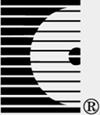三擦Reed-Solomon码的协同修复方案
IF 4.4
3区 计算机科学
Q2 TELECOMMUNICATIONS
引用次数: 0
摘要
RS (Reed-Solomon)码广泛应用于分布式存储系统中,这种系统中偶尔会出现多节点故障。对于通过三次擦除对$\mathbb {F}_{q^{\ell } }$上的$[n,k]$ RS代码进行合作修复,现有方案需要$ n {-} k \geq q^{\ell - 1} $、$\ell \geq 4$,并且通常需要在协作阶段进行三轮信息交互。这封信提出了两个关键的进步。首先,我们利用精心设计的子空间对应的线性化多项式,开发了一种增强的三轮合作修复方案。与现有方案相比,该方案在保持相同修复带宽的同时,将约束降低为$ n {-} k \geq q^{m} $,采用整数$m\in \left [{{\frac {3}{4}\ell, \ell -1}}\right]$, $\ell \geq 4$。其次,我们改进修复方案以实现一轮协作,尽管修复带宽略有增加。本文章由计算机程序翻译,如有差异,请以英文原文为准。
Cooperative Repair Schemes of Reed–Solomon Codes With Three Erasures
Reed-Solomon (RS) codes are widely utilized in distributed storage systems, where multiple node failures occur occasionally. For the cooperative repair of $[n,k]$ RS codes over $\mathbb {F}_{q^{\ell } }$ with three erasures, existing schemes necessitate $ n {-} k \geq q^{\ell - 1} $ , $\ell \geq 4$ and typically require three rounds of information interaction during the collaboration phase. This letter presents two key advancements. First, we develop an enhanced three-round cooperative repair scheme by using linearized polynomials corresponding to meticulously designed subspaces. Compared with the existing schemes, the proposed scheme maintains the same repair bandwidth while reducing the constraint to $ n {-} k \geq q^{m} $ with an integer $m\in \left [{{\frac {3}{4}\ell, \ell -1}}\right]$ , $\ell \geq 4$ . Second, we refine the repair scheme to achieve one-round collaboration, albeit with a minor increase in the repair bandwidth.
求助全文
通过发布文献求助,成功后即可免费获取论文全文。
去求助
来源期刊

IEEE Communications Letters
工程技术-电信学
CiteScore
8.10
自引率
7.30%
发文量
590
审稿时长
2.8 months
期刊介绍:
The IEEE Communications Letters publishes short papers in a rapid publication cycle on advances in the state-of-the-art of communication over different media and channels including wire, underground, waveguide, optical fiber, and storage channels. Both theoretical contributions (including new techniques, concepts, and analyses) and practical contributions (including system experiments and prototypes, and new applications) are encouraged. This journal focuses on the physical layer and the link layer of communication systems.
 求助内容:
求助内容: 应助结果提醒方式:
应助结果提醒方式:


